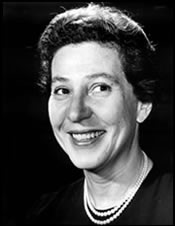
|
Compositions *** |
Concerto for Piano Strings and Percussion (One Performer)
year
1972
duration
10 ½ minutes
instrumentation
Solo piano and percussion
première
April 15, 1973, Finch College Concert Hall, New York City, Vivian Fine, piano and percussion
recording
Available on demo CD
program notes
The Concerto was written to give myself a fairly long work to perform. It begins with a cadenza; a little later the first two-part Invention of Bach is recalled in a version played on the strings; there are passages of romantic surge, bell-like sonority, sea-like roars. The percussion instruments reinforce the angers and woes. The pianist acts: [she] works on the keyboard and innards and at the same time has an attitude of not being totally involved with herself in the serious business of being a pianist.
–Vivian Fine
It had been twenty years since Fine had written a substantial work for piano…and having experimented with some interior piano sounds, such as strumming and plucking, in Two Neruda Poems, Fine decided to compose a virtuosic work for herself….The piece requires an intricate setup using an extra piano stool, timpani, triangle, and cymbal, with appropriate notation for plucking, stopping, scratching, bouncing, and performing clusters on the strings. Recall that in her teen years during the 1920s Fine performed some of Cowell’s compositions, such as the Aeoline Harp and Banshee, so one wonders why she waited so long to write her own experimental keyboard piece. When asked, her reply was, “I don’t know…the idiom [Cowell’s pieces] did not influence [me] but his boldness [did]…people were aghast and laughed.”
The Concerto exploits pianistic technique to the fullest by transferring piano gestures to various parts of the instruments. The piece begins with resounding bounced, plucked, and scratched interior sounds that gradually move to pentatonic keyboard riffs in contrary motion. Gradually the performer’s movements incorporate the percussion instruments that surround the piano. Fine reported that it is not long before the audience is befuddled and begins to wonder who is the soloist in this Concerto—the keyboard, strings, or percussion. By page 6 of the manuscript, several minutes into the piece, Fine quotes Bach’s first two-part invention. It begins with the opening motive played on the keyboard and then transfers to the interior with the following instructions: “Play firmly on strings with fingers. Exact pitches are not required, but play in the indicated register and keep the relative relationships indicated.” It is at this point that the audience realizes that the piece is a spoof and begins to appreciate Fine’s humor. Since she wrote it for herself, she incorporated all of her own virtuosic technique, which she executed seriously, so that her performance became a theater piece. In fact, it was so difficult to play, Fine memorized it. The piece is well made with exact performance details, and frequent tempo changes (twenty-seven) shape the material. There is no improvisatory or aleatoric procedure. Instead, gestures are expanded, and an impressive keyboard cadenza precedes a short recapitulation.–Heidi Von Gunden, The Music of Vivian Fine, Scarecrow Press, 1999
reviews
“The composer also gave the first performance of her Concerto for Piano Strings and Percussion (1972) in which she functioned as one-woman band….the Concerto was absorbing in its aural sensitivity, and in its tongue-in-cheek manner.”
–Donal Henahan, The New York Times, April 17, 1973
“…Fine extracted every possible kind of sound from the piano, using the keyboard and sundry other means….As an experiment in sonics this piece was highly effective…[and] while quite free in form, still held together.”
–Edward French, Knickerbocker News, November 21, 1974
audio files